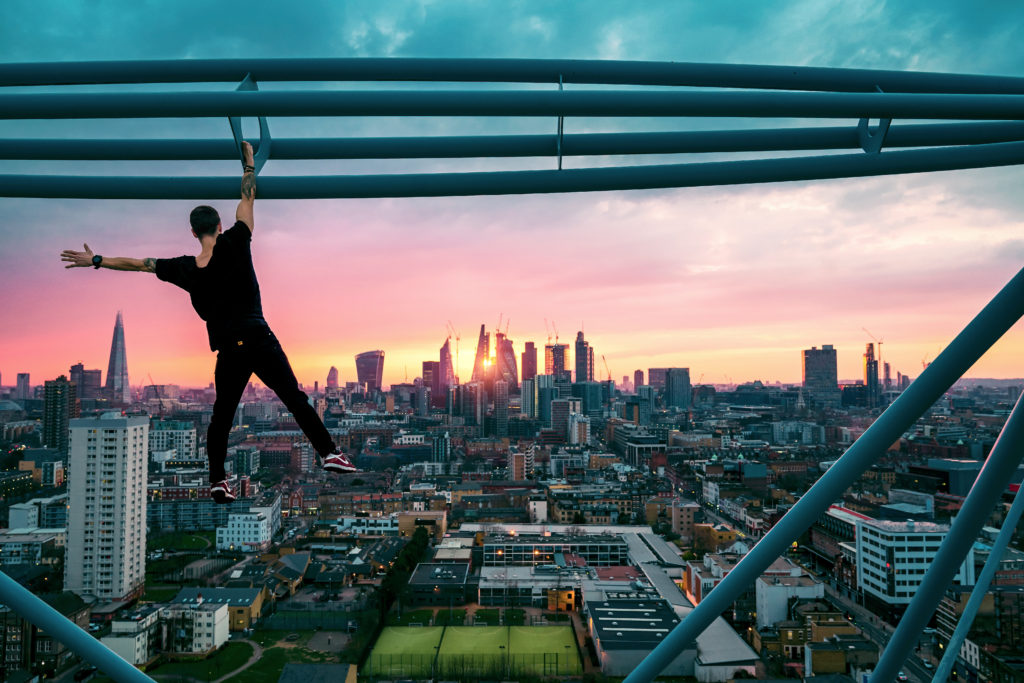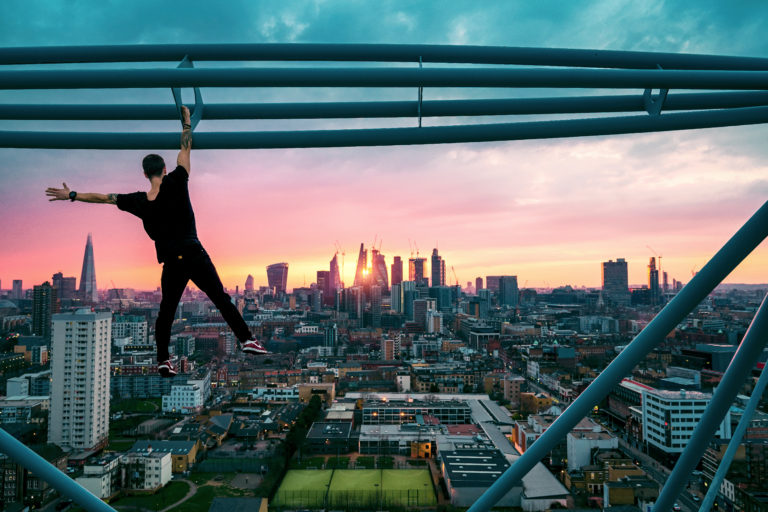We had the esteemed pleasure of interviewing one of the most inspiring photographers in the Parkour world, Volodya Voronin. Volodya rose to prominence in the Parkour world in the early 2010s through his photographs of Traceurs such Alexandr Zhurkov, Slava Petin, Andrew Inf, and Parkour legend Stanislav Lazdan. He reached international prominence when a Parkour photo of his was named as a finalist for the Red Bull Illume contest. Volodya continues to creates some of the best action spots photography we have ever seen, and we hope you enjoy hearing his story and learning some tips and tricks for both being a photographer and working with them.
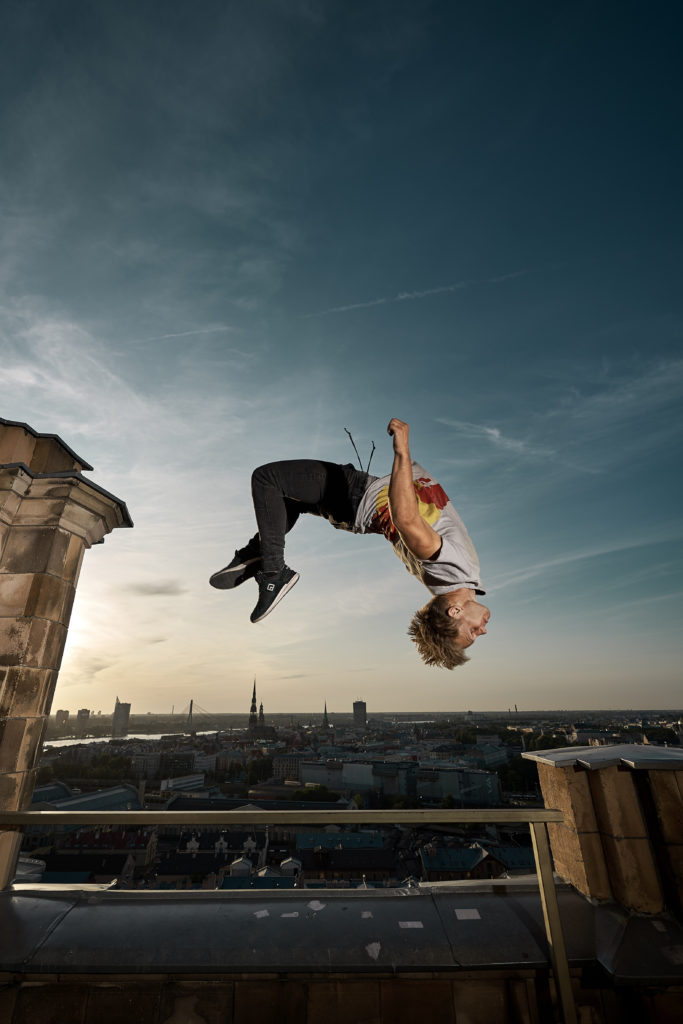
Let’s start with you. What is your name and where are you from?
Hello! My name is Vladimir or Volodya or Vova – whichever is more comfortable for you (but not Vlad, that’s a different name) and I’m from Latvia.
What inspired you to get into photography, and what inspired you to start photographing Parkour specifically?
From childhood I was a kid with a lot of energy, so I was always climbing somewhere on trees, abandoned buildings, or rooftops. I often used to play tag in the local abandoned building in Riga. And already as a child I was jumping over the gaps, doing wall runs and overcoming obstacles. Basically, I was doing parkour before it even became popular and before officially Belle integrated these movements into a sport discipline. Also in these days I had my parents’ old camera, so I often took it to shoot my friends’ flips and rooftop sunset pictures. My Parkour and Photography skills were developing in parallel.
For me the biggest accomplishment is not about the career, prizes or brands – it’s my work and their backstories.
How did you develop your skills and vision as a photographer? Did you have any mentors or anyone you looked up to?
For the first 6-8 years, when I was a child, I was just taking random pictures, without any photography knowledge. I didn’t know what settings such as ISO, shutter, aperture etc. So of course a lot of photos were trash. Later, when the internet and social network opportunities grew, I started to watch the works of other people. Sometimes I was watching and exploring pictures for hours, because I liked them a lot, and these pictures inspired me so much that I wanted to make them posters. Later, when Facebook, Instagram, 500px and other social networks became popular, I subscribed to the top photographers who inspired me a lot. So there wasn’t any personal mentor, but there was a huge community of people and their shots, from whom I was studying just by analyzing their works. Actually, I still do it and now. If I like someone’s work – I’ll investigate it deeply.
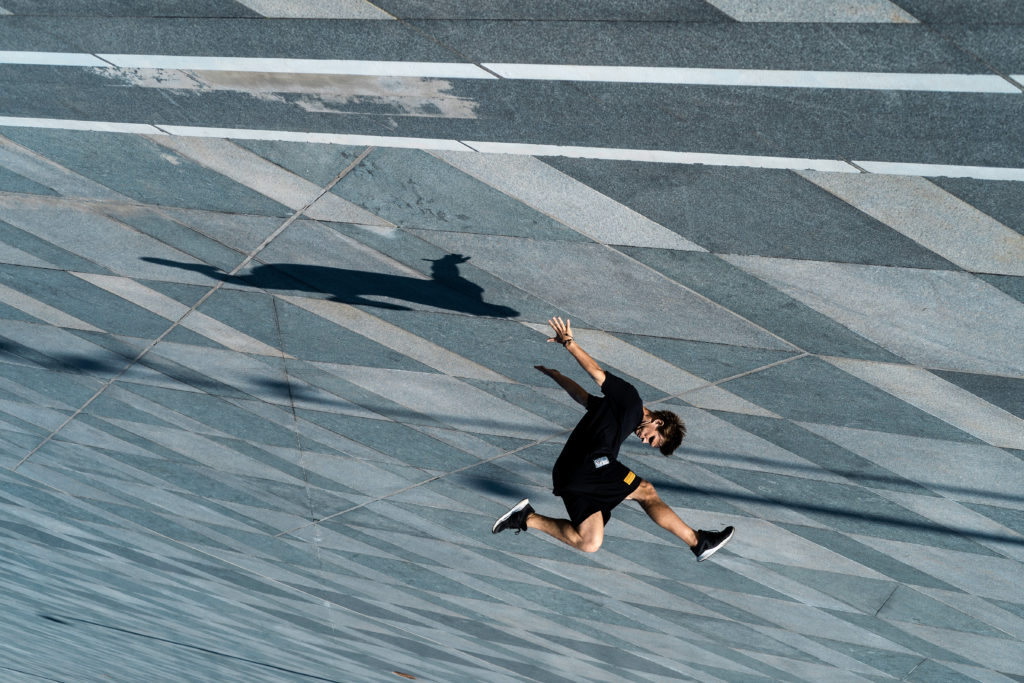
What was the first Parkour photo shoot you did? Where was it and who did you shoot with?
A lot of layout backflips. When my friend and I learned how to do them – we were doing them everywhere. There were only backflip shots in my videos and photos. That’s why I hate these flips so much now lol, but still I’m doing this kind of shots, because for an athlete it’s the easiest way to hold a cool midair shape.
It’s always quite nervous if you have only one try. Especially if you need to quickly set up a light scheme around the trick because security will come soon. So you don’t have any chances for mistakes, and in such situations the biggest factor is one’s overall ability and experience in photography.
Are there any athletes that you’ve worked with especially much? If so, why have you spent so much time shooting with them and what do you value most about them?
I think every photographer at his start takes a lot of his friends’ pictures, especially if they are doing Parkour or other extreme stuff like MTB, Skate, Climbing etc. If you’re training and spending a lot of time with some person, you’ll film and shoot him a lot. So my guinea pigs were 3run Latvia athletes like Alexandr Zhurkov, Slava Petin, Andrew Inf, Stanislav Lazdan and others. We used to film and shoot each other all the time. And the most valuable thing about that was that everybody was doing it for the idea and passion. Most of them are still down for any cool idea or project even if there’s no budget. Same as in the past – everybody was often down for some crazy idea with spending a lot of time in it to shoot really quality content.
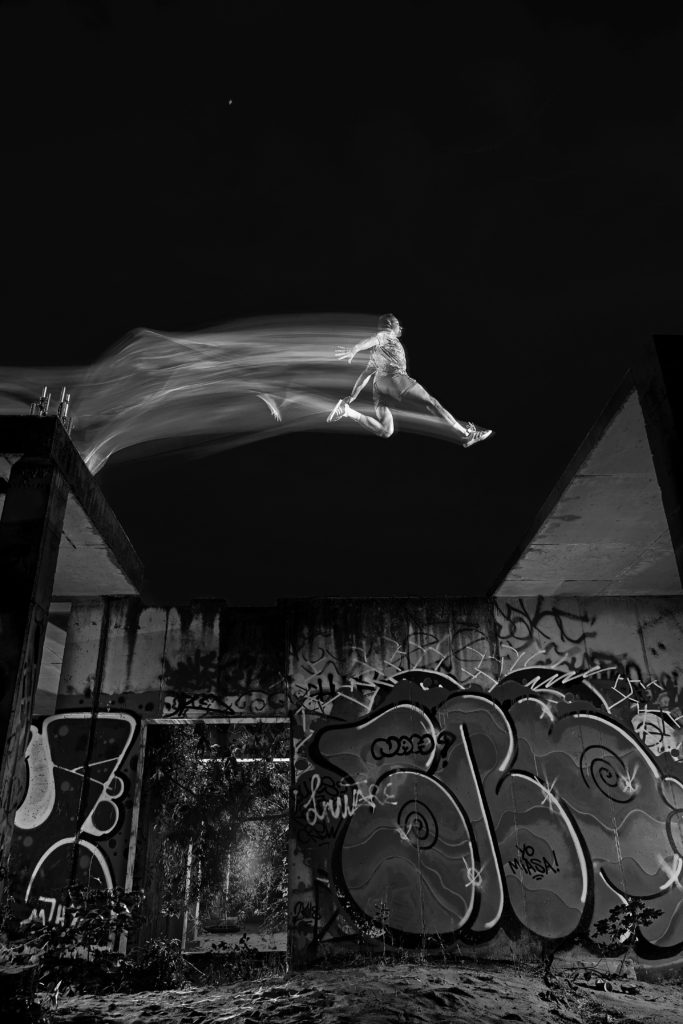
How do you communicate with an athlete when you are photographing them so that you can get the perfect shot?
If we’re talking about the perfect staged shot, then an athlete needs to be really inspired the same as you are. That’s the key. Sometimes it can be a project when an athlete is paid, but even when it’s just for the idea, the key is to describe your thoughts about the photo to a athlete. And if he enjoys the process of shooting he will also put in more effort because of his interest in the final result. Secondly, the whole process of shootings must be in a friendly tone. Of course it’s easy if you’re shooting your friend, but if you haven’t met a person before, firstly you need to gain that good positive vibe between each other. Last but not least, it’s important always to stay in contact with an athlete – show him pre shots, ask for the best position, ask what he overall can do in shooting conditions, so maybe he will propose his own ideas and it will bring an upgrade to the final result.
What are the biggest challenges you face when capturing action sports such as Parkour?
It’s always quite nervous if you have only one try. Especially if you need to quickly set up a light scheme around the trick because security will come soon. So you don’t have any chances for mistakes, and in such situations the biggest factor is one’s overall ability and experience in photography. Like how quickly and precision you can set up all the parameters in camera, the flashes, and also catch the perfect moment.
…that also was the reason why I didn’t expect that this photo would be in the Finals of Illume. I sent many other works and in my opinion they were better. But photography is a subjective thing.
If I am not mistaken, you have been a finalist for Red Bull Illume more than once. The first time was for a photo of Andrey Grebenkov jumping between two overpasses. Tell us the story of that photo. Did you expect it to get so much attention?
Yeah, you’re right. Actually the story of the shot was quite simple. It was a precision jump over the railroad, and when Andrey jumped it for the first time I got an idea to capture this jump with flash exposed on him. It was a time when friends had just given me me my first flash, and I started practicing with flash photography. So yeah, that was the reason why I didn’t expect that this photo would be in the Finals of Illume. I sent many other works and in my opinion they were better. But photography is a subjective thing.
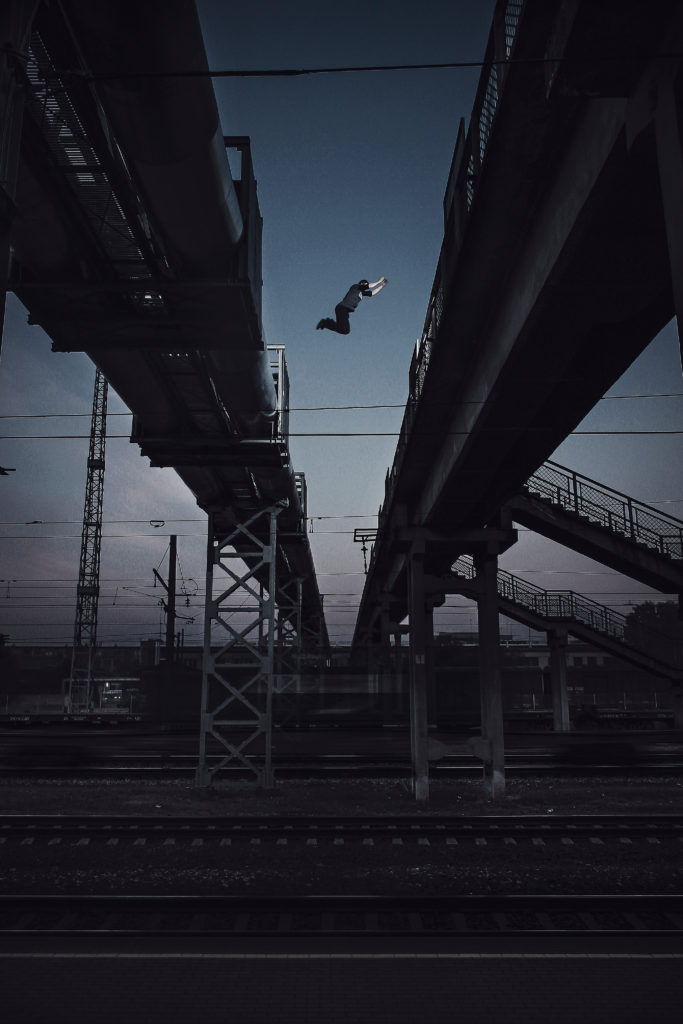
Is being nominated for Red Bull Illume the biggest accomplishment of your career? If not, what is the biggest accomplishment?
I think no, it definitely affected my photographer confidence, but that’s all. For me the biggest accomplishment is not about the career, prizes or brands – it’s my work and their backstories. So I don’t have one biggest accomplishment. I have a few shots, some of them are far away from even being good ones, but with interesting backstories that I’m proud of.
Most Traceurs and Freerunners want to have great photos of themselves to share and look back on. What recommendations do you have for athletes who are in front of the camera and not behind it? What can they do as athletes to work with photographers to help capture better photos?
You need to do a LOT of twists with doubles, even triples. The more twists you can perform – the better shot will be. I’m just kidding lol. There have been several situations when an athlete was thinking that a double cork for a photo was a great idea – believe me, it’s not! Actually the best way to capture interesting shots is to experiment with air form. It doesn’t even have to be a flip, just a jump with a cool grab and nice angle for the shot. So it’s better to practice one flip with a very perfect air form, where you can control head, arms and legs direction perfectly than to do doubles or triples or complex moves.
…the best way to capture interesting shots is to experiment with air form. It doesn’t even have to be a flip, just a jump with a cool grab and nice angle for the shot.
For the Traceurs reading this who want to start exploring photography, what are two or three tips or techniques that you can share for taking great action sports photos that would be especially helpful for those getting into photography.
Actually there’s only one thing I can recommend for sure, and that is to explore other people’s works. And not just “explore” but learn all about them. Explore how light is laying on the athlete, explore composition, camera settings, angle, athletes’ position, how this shot was taken overall etc. Maybe later, try to shoot something like that. Maybe you can even improve the ideas and shoot better. And I’m not talking about stealing someone’s ideas and work, I’m talking about practice. So the practice is my second advice – practice a lot and everywhere in any conditions.
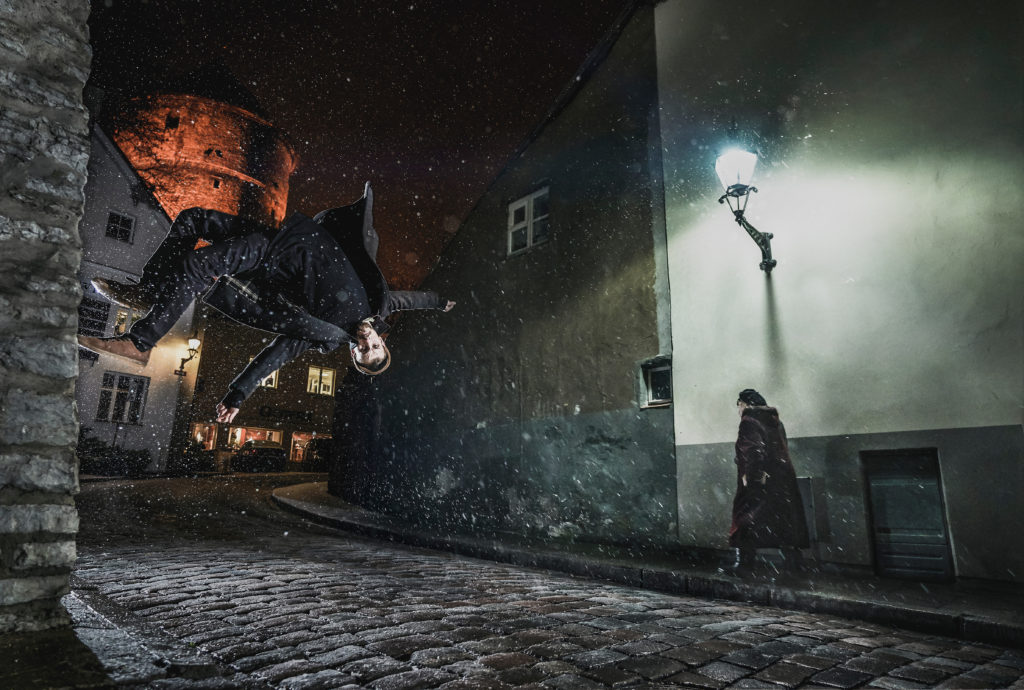
How important are post production skills and editing? Do you have any advice or tips on that?
It is very important. As a Photographer, I know Photoshop, Lightroom, Capture One, Photo Mechanic really well. As a Videographer I know Premiere Pro, After Effects and DaVinci Resolve. Because I’m always trying to catch the perfect shot straight by camera, I don’t do so much with editing, just color editing and some light cosmetics if needed (removing wires or dust). But with commercial shootings things are changing. Sometimes customers ask for a lot of post-production and this is when your knowledge of the software will work mostly. But remember in really tough cases you can always hire a professional editor.
Basically that moment of getting into the finals of Red Bull was the line in my life when I strongly decided to associate my life with photography
Is there anyone (a friend, family, or athlete) that has been especially helpful in your career that you are especially thankful for?
As I said previously, the shot with Andrey for Illume was done when I started flash photography practice. So my first flash and the reason why I started practicing more was because of a gift from Stanislav Lazdan and Slava Petin. Basically that moment of getting into the finals of Red Bull was the line in my life when I strongly decided to associate my life with photography and to not retreat from this path even if it would become really tough. So logically – I’m very grateful to Stanislav, Slava and Andrey who put an effort in my path start.
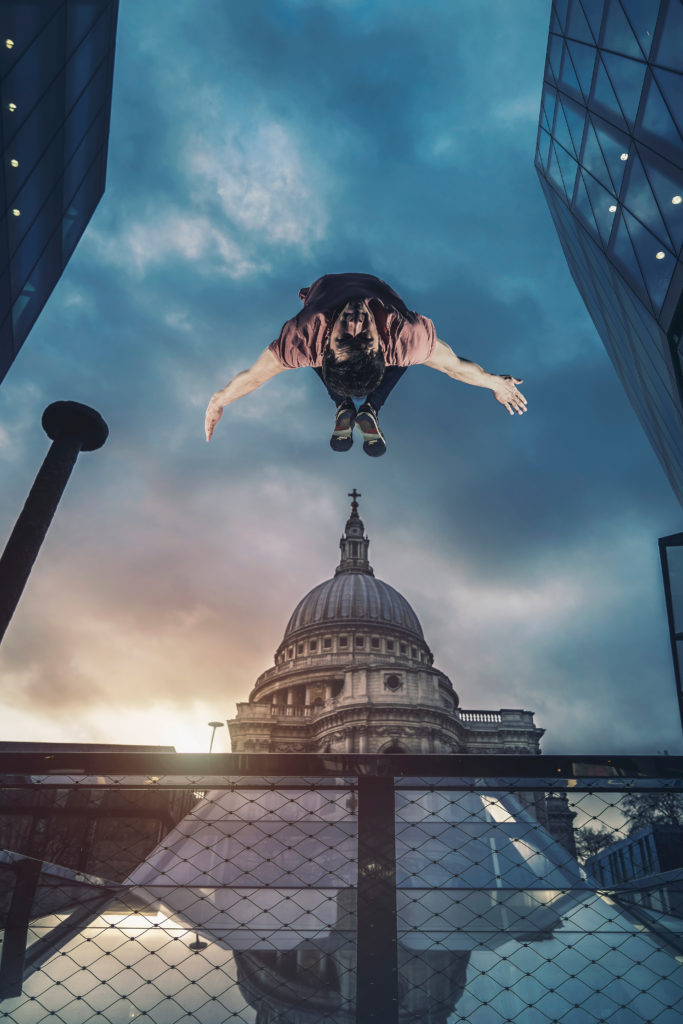
Are you currently working on any projects?
I always work with some ideas. If they’re not commercial, they’re my own, just for bringing some idea to life. I’ve got a notepad with a lot of ideas in it. Now I have a few commercial projects upcoming, but I will be working on several projects by myself.
How can readers connect with you and support you and your work?
I have the website with all portfolio and information:
And of course IG:
Last but not least, do you have a favorite photo?! Or are they all special in their own way?
There’re a few favorites with really rich backstories where I can say that they’re perfect. And even if I had an option to change something, I couldn’t make them much better.
